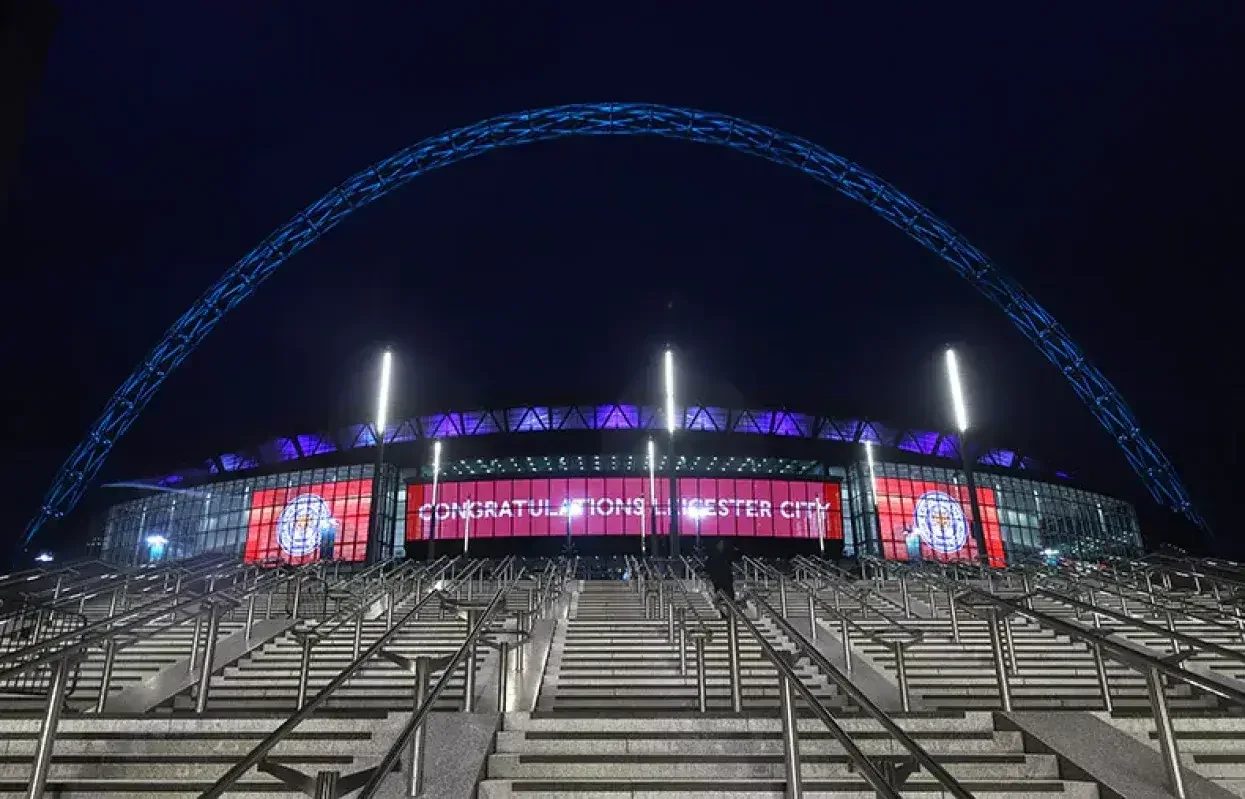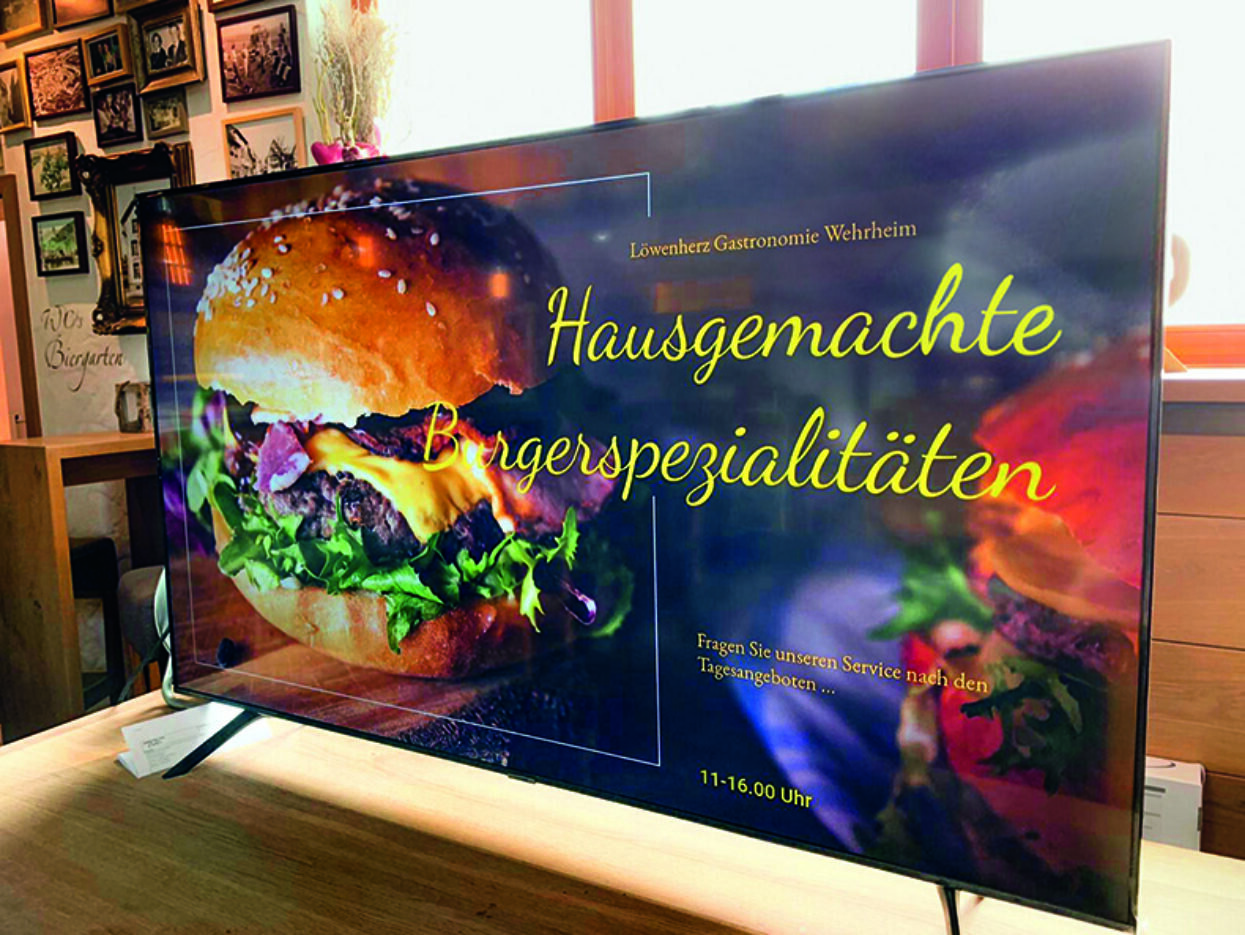
Digital Signage is taking over advertising space from Wide Format Digital Printing. But which technology will prevail? Sonja Angerer analyses Digital Signage and Large Format Printing and compares the two.
Digital signage was first seen in flagship stores, in famous museums and malls, but now they are everywhere. Digital signage seems to have taken over many of the sign and advertising spaces previously preoccupied by Wide Format digital print. According to a recent Futuresource Study this has declined, with YoY professional screens volume in EMEA reducing by 10% from 2019 to 2020.
Let’s review the advantages and disadvantages of Digital Signage and Large Format Printing to determine what the future would be for both of those different technologies.
We will cover 3 main topics:
- The Impact of Communication
- Sustainability
- Futureproofing
The Impact of Communication: Digital Signage vs Large Format Printing
There are distinct differences between printed applications, particularly concerning the different choices of content: static image or text versus animated pictures and video. Videos are more effective than static content as they provide more interaction and engagement. According to Wordstream, nearly 60 % of executives will choose video content over static copy. Videos are attention grabbers, and this is only possible on screens. This is one reason why video screens are banned near streets and highways in many European countries, as they are too much of a distraction and are a threat to the safety of drivers and passengers.
The technology offers another great advantage over any printed application. If the screen is connected to a data network, content can be easily changed to suit the time of the day or the number of passers-by. Modern digital signage systems in malls can stream content targeted to an individual person standing in front of the display. Digital signage software developers increasingly rely on AI (artificial intelligence) to target audiences more precisely.
“In simple terms: where Digital Signage provides added value beyond colourful images, it is likely to push aside printed applications”, says Balthasar Mayer, Editor in Chief to invidis consulting, a Munich-based consultancy with focus on Digital Signage.
He states: “This is applicable to outdoor advertising. Digitalisation is inevitable, as more businesses across several industries are using Digital Signage e.g., fast-food restaurants can change prices and offers across all their locations, or also just in one specifically”.

CAPTION: Stroeer Giant Poster at Berlin. When it comes to static medium-to-long-term advertising, Large Format Printing is a clear winne. Photo Credit: Stroeer
Sustainability: Large Format Printing vs. Digital Signage
The question whether advertising can truly be sustainable is debatable. There is an argument that advertising can result in wasteful consumption as stated on blogs like Eco Warrior Princess.
360 Agency Berlin are the self-declared “first advertising agency in the world to promote exclusively sustainable brands and initiatives”. Their most recent campaigns for the European Union and Keens Footwear uses both printed outdoor advertising and Social Media content and adverts.
While there is a wide range of indoor and outdoor applications for LFP and Digital Signage, there are 2 main areas of sustainability concerned for both applications.
- Recyclability
- Carbon Footprint from power consumption
When it comes to recyclability, one would assume that print is more recyclable, but this is not necessarily true. Industry initiative European Paper Recycling Council reached a 74% target for paper recycling for 2020. Therefore, today´s paper recycling rate in EU is much higher than North America and Asia. However, many LFP applications today are not printed on paper-based substrates, but on plastic, boards, or fabrics, with recycling rates being much lower than paper. In contrast, video content featured on a digital screen does not need any kind of recycling, as it is not physical.
It is important to understand that printing machines result as e-waste just like Digital Signage screens. According to the United Nations University’s Global e-waste monitor, 50 million metric tonnes of electronic products are discarded every year. The average LCD screen is estimated to last between 4-7 years. MicroLED and Plasma displays can last up to 11 years.
Regarding carbon footprint from power consumption, LFP seems to be more superior than Digital Signage, as printed media usually does not require any electrical power once it is installed. LG Electronics published a detailed carbon emission report for displays in its 2020-2021 Sustainability report. According to this report, over 80% of carbon emissions are produced while the screens are in use.
LCD indoor applications have an estimated power intake between 100 – 400 watts, this is dependent on the size, content, and brightness. Very large outdoor MicroLED Screens may require over 400 watts per square meter. A typical Digital Signage application runs 16 hr/day, throughout the year.
After the March 2021 update of the European Union Energy efficiency label, most Digital Signage LCD screens are rated a “G”, which is the lowest rating. This applies to only the screen and does not consider network connections, climate control cases or cameras.
While the digital signage industry has recognized the problem and has been recently investing into “Green Signage”, in terms of carbon footprint from power consumption, LFP seems to be the winner.

CAPTION: Any content on a Digital Signage screen can easily be changed. In Picture: 75 Inch Business TV from Samsung at Löwenherz Gastronomie Wehrheim. Photo Credit: Samsung
Futureproofing: LFP vs Digital Signage
The latest decline in Digital Signage could be a sign that there is a reduction in the need for screens, this could be due to the world-wide shortage of raw materials and chips.
Today, outdoor advertising is shifting focus: Stroeer, one of Germany´s biggest Out-Of-Home (OOH) advertising specialists, has put Digital Out Of Home (DOOH) front and centre, both for outdoor and POS applications.
With programmatic advertising / real time bidding on the rise, it is also easy to include screens into advertising inventory. This makes it possible to sell per-impression advertising space for instant content delivery across a wide range of channels, including Digital Signage, websites, and ocial Media channels. DOOH applications has become a part of the thriving online advertising world and media budgets previously unattainable, will probably be the biggest advantage over LFP.
“Programmatic booking for outdoor advertising will accelerate the trend towards digitalisation even more. Programmatic exemplifies the advantages of digital signage across all areas. It is about more than just colourful, moving images: the overall digitalisation of processes will bring more flexibility, faster processing and easier access”, says Mayer.
When it comes to long-term static advertising, LFP is well suited for outdoor and POS advertising it has the advantage of “total costs of ownership” as energy costs continue to rise.
Recent wide format innovations like Blowup Media´s “The Pure”, PVC-free Megaposters with an air-purifying coating, may help to further reduce carbon footprints and help to establish printed advertising as a sustainable alternative. Regarding Digital Signage and Large Format Printing, it seems that LFP may face a similar medium-to-long-term end as analogue printing, being reduced to niche and speciality applications.